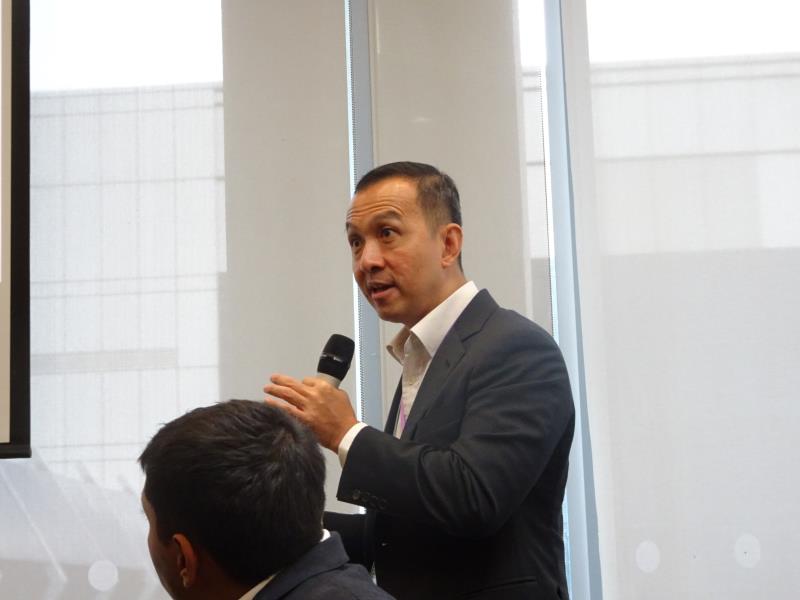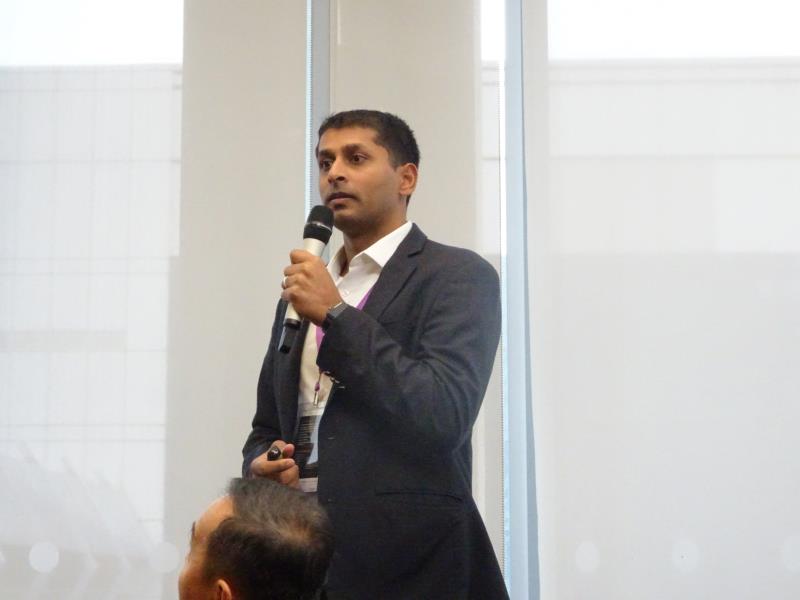 Dr Yong Wei Peng
Dr Yong Wei PengWhether perioperative chemotherapy incorporating S-1 in the neoadjuvant setting provides better treatment outcomes than adjuvant chemotherapy postoperatively for patients with locally advanced gastric cancer (LAGC) was the topic of a lively discussion during the lunch forum session at the ISSPP 2019 Congress.
Being highlighted was the PRODIGY study which compares surgery + adjuvant S-1* (SC arm) vs neoadjuvant DOS** followed by surgery and adjuvant S-1 (CSC arm) in 484 Korean patients (median age 58 years) with resectable LAGC.
During a median follow-up of 37.4 months, treatment with neoadjuvant DOS before D2 gastrectomy and adjuvant S-1 (CSC arm) led to improved progression-free survival (PFS) compared with gastrectomy + adjuvant chemotherapy (SC arm; median PFS rate, 66.3 percent vs 60.2 percent; hazard ratio [HR], 0.70; p=0.023).
Additionally, more patients in the CSC arm were able to undergo R0 resection compared with the SC arm (96.4 percent vs 85.8 percent; p<0.0001). There was also significant tumour downstaging in the CSC arm vs the SC arm (p<0.0001).
However, the better PFS and R0 resection rate with neoadjuvant chemotherapy in the CSC arm did not translate to significant overall survival (OS) benefit over SC (HR, 0.84; p=0.3383), noted Dr Yong Wei Peng of National University Cancer Institute, Singapore (NCIS), who presented the study during the forum.
Nonetheless, the high proportion of patients (89.9 percent) who completed the three cycles of neoadjuvant chemotherapy with DOS indicates that the neoadjuvant chemotherapy regimen was tolerable, noted Yong. “There were very few patients [2.1 percent] who progressed during the initial neoadjuvant treatment.”
The tolerable safety profile was further supported by surgical outcomes, which showed that the CSC arm did not have increased grade ≥3 operation-related complications compared with the SC arm (6.3 percent vs 8.5 percent), according to Yong.
When asked about what impact the findings have on practice, invited panel discussant Dr Lam Ka On from Queen Mary Hospital, Hong Kong said the study was interesting but not practice-changing.
“The study raised more questions than answers,” said Lam, who pointed out that the optimal duration and regimen of neoadjuvant therapy as well as subsequent adjuvant therapy have yet to be elucidated.
Role of neoadjuvant chemo still not RESOLVEd?
In a separate study, the three-armed RESOLVE trial showed that compared with postoperative XELOX***, perioperative SOX# was superior for the primary endpoint of disease-free survival (DFS) at 3 years (HR, 0.79; p=0.045), while postoperative SOX was noninferior (HR, 0.85; 95 percent confidence interval, 0.67–1.07).
Participants in the phase III, multicentre, open-label RESOLVE study were 1,094 patients (median age 60 years, 75.2 percent male) with LAGC (stage cT4a/N+M0 or cT4bNxM0 gastric or gastroesophageal junction adenocarcinoma). They were randomized 1:1:1 to one of the three arms: adjuvant XELOX for eight cycles (arm A), adjuvant SOX for eight cycles (arm B), or three cycles of neoadjuvant SOX and five cycles of adjuvant SOX followed by three cycles of S-1 (arm C).
“Compared with postoperative XELOX, there was no increase in surgical morbidity, mortality, and treatment-related AEs in both peri- and postoperative SOX,” reported Dr Raghav Sundar of NCIS, who presented the findings for RESOLVE.
Commenting on the study, Lam said that as SOX and XELOX are already two different therapies, adding another variable (adjuvant vs neoadjuvant) in the comparison of arm A vs C precludes any conclusion from being drawn on the effects of adjuvant vs neoadjuvant chemotherapy in the study.
“Although not practice-changing, the study has shown that neoadjuvant chemotherapy is feasible in Asian patients,” said invited panel discussant Professor Florian Lordick of University Cancer Center Leipzig, Germany.
When asked on the factors that might prompt one to choose SOX over XELOX, Yong said clinicians need to take toxicity and cost of treatment into consideration and pointed out that S-1 was associated with slightly fewer hand-foot skin reactions, although this AE was not reported in the RESOLVE study.
 Dr Raghav Sundar
Dr Raghav Sundar